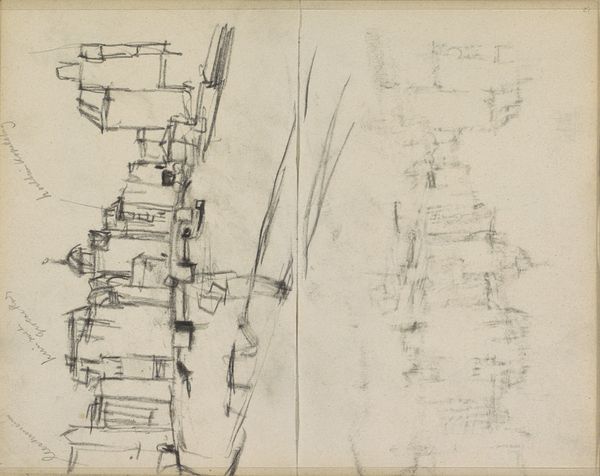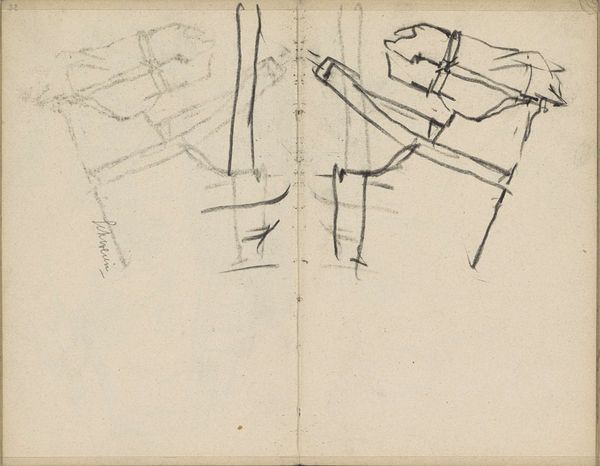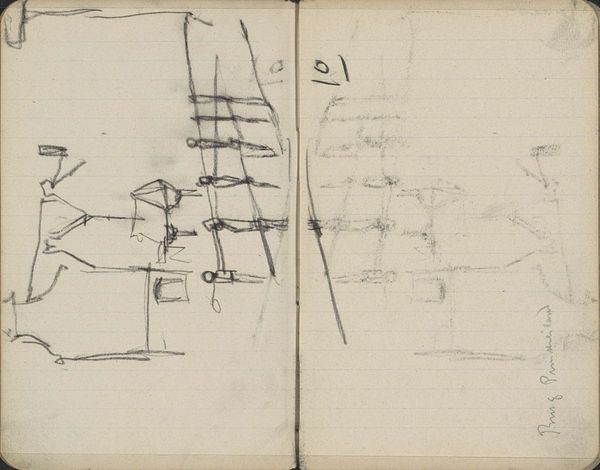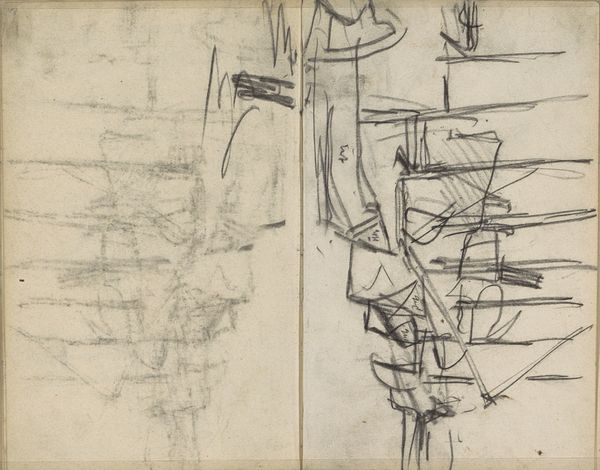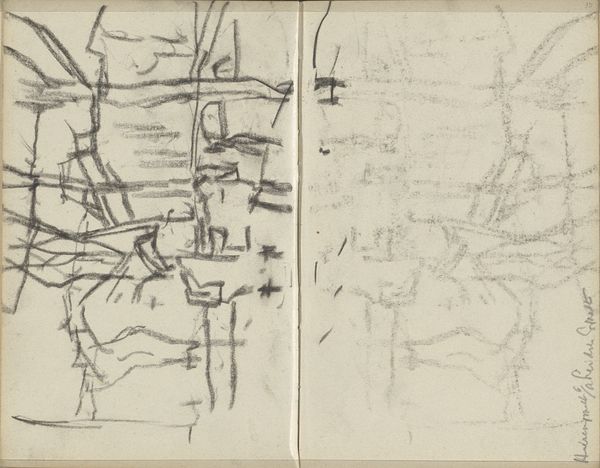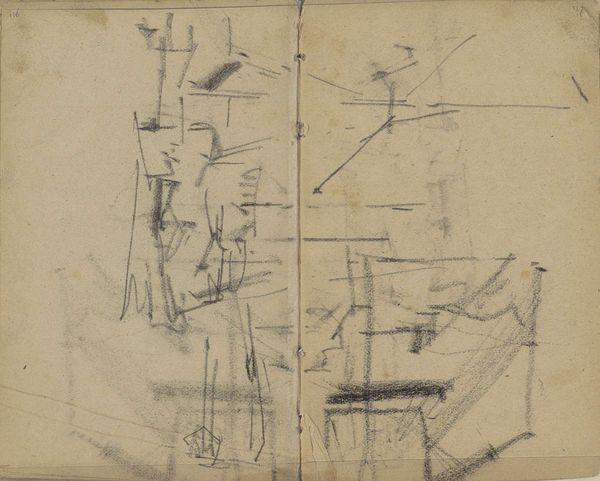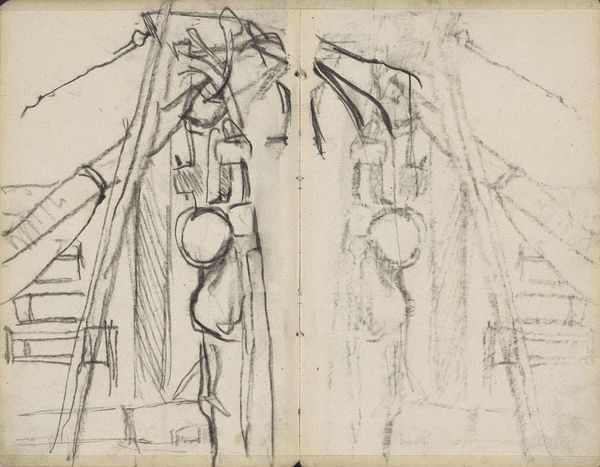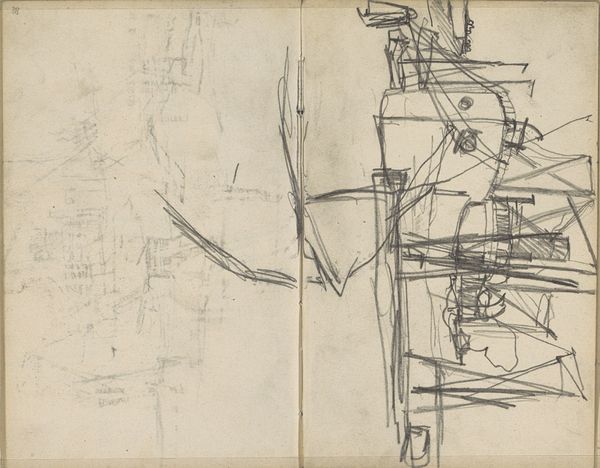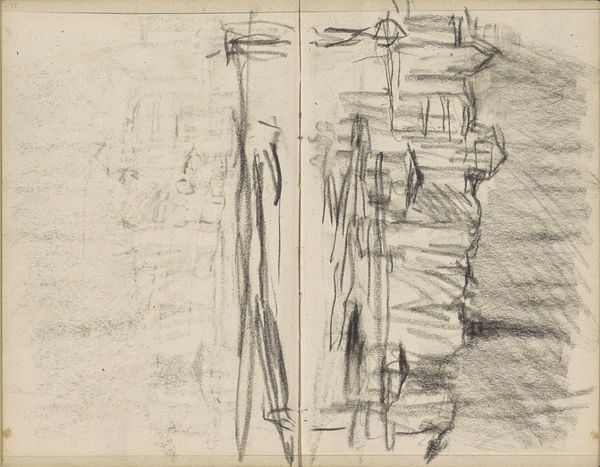
Brug over de Reguliersgracht te Amsterdam, gezien vanaf de brug over de Herengracht 1910
0:00
0:00
Copyright: Rijks Museum: Open Domain
Editor: This is George Hendrik Breitner's "Bridge over the Reguliersgracht in Amsterdam, Seen from the Bridge over the Herengracht," created in 1910 using pencil and possibly some ink. It seems like a quick sketch, almost ephemeral in its rendering. What captures your attention about this piece? Curator: The sketch highlights the artistic process itself. Breitner isn't concerned with creating a finished product. Instead, he seems interested in the immediacy of capturing a specific moment, a specific vantage point. Look at the pencil work – how it renders form, not with detailed precision, but with a sense of capturing light and shadow. Editor: So you’re focusing on how it was made. Does the fact that it’s a sketch change its value as art? Curator: Absolutely not. Consider the materiality. Breitner used readily available materials—paper, pencil—likely within the confines of a sketchbook. It suggests a democratization of artmaking, a departure from the traditional, painstaking methods associated with "high art". What's interesting is the unpretentious and the provisional nature. We're seeing a record of labor and observation, pure and raw. What do you make of the figures in the foreground? Editor: They appear hastily drawn, almost like afterthoughts. Curator: Perhaps they reflect the pace of city life, captured through the fleeting marks. It speaks to the burgeoning industrial society and how it impacts human activity, viewed through the lens of an artist engaged with his immediate environment. What tools and modes of production were used, and for whom were the product designed and intended? It gives us an opportunity to investigate the art from the point of materiality instead of just focusing on the overall message that the artist is conveying. Editor: That’s a great point. I didn’t think of the “everydayness” of the materials as having such significance. Curator: Examining art through its materiality reveals a whole other layer of social and economic factors. It transforms our understanding of not only the art, but also how artists operated and perceived their world. Editor: I’ll definitely look at art differently now!
Comments
No comments
Be the first to comment and join the conversation on the ultimate creative platform.
